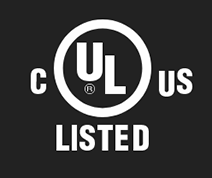Environmental Impact of Nitrogen Gas Generators: A Green Solution
Nitrogen generators are an important part of industries ranging from food and beverage packaging to aerospace. Nitrogen is an essential element in these industries because it can drive out oxygen to prevent oxidation while also driving out moisture to create a dry, inert environment. Nitrogen can prevent the degradation of a product that might otherwise be corroded, damaged, or rotted by exposure to oxygen and moisture.
There are multiple nitrogen supply methods, including nitrogen gas cylinders and liquid nitrogen. These methods have traditionally been used to supply nitrogen to warehouses, facilities, and factories in need of nitrogen. However, cylinders have a variety of negative environmental impacts.
Nitrogen gas generators offer a sustainable alternative to nitrogen cylinders. This article will explore the ways that green nitrogen gas generators can protect your business from the negative environmental impact of nitrogen cylinders.
The Basics of Nitrogen Gas Generation
The air is made up largely of nitrogen. Nitrogen gas generators draw the nitrogen out of the air and create a stream of it for the user. There are two types of nitrogen gas generators: pressure swing adsorption generators (PSA) and membrane generators. These two types of generators can both produce a continuous stream of nitrogen gas, but they function in different ways.
PSA nitrogen generators pass compressed air through a bed of adsorbent material. Molecules from oxygen and moisture are trapped in the adsorbed material, while nitrogen gas is released. PSA nitrogen generators are an excellent option in industrial applications that require a high-purity stream of nitrogen.
Membrane nitrogen generators also use the nitrogen in the air to create a stream of nitrogen gas. These generators have a semipermeable membrane that helps separate nitrogen and other gases. Membrane generators are often used for applications that require a lower purity nitrogen.
Environmental Challenges with Traditional Nitrogen Supply
Traditional nitrogen supply presents many environmental challenges, from the filling of nitrogen cylinders to the delivery of nitrogen to customers. For example, nitrogen cylinders are filled in a commercial plant using cryogenic air separation. The process of cryogenic air separation generates excessive carbon dioxide and uses a lot of energy.
Although nitrogen cylinders are reusable, the cylinders produce waste when they are decommissioned. In addition, cylinders rely on transportation to and from the customer, and through this process rely on the use of non-renewable resources. Ultimately, nitrogen cylinders of all kinds are not environmentally friendly and impact a business’s carbon footprint.
The Green Credentials of Nitrogen Gas Generators
For businesses concerned with nitrogen generators and the environment, it’s important to know that nitrogen generators represent a reduction in carbon emissions compared to traditional methods of nitrogen delivery. On-site generation of nitrogen requires relatively little energy compared to the transportation of nitrogen cylinders. There are several ways that this is true:
- Low energy use. Nitrogen generators need energy to run but require relatively little energy compared to the amount of energy it takes to fill a nitrogen cylinder.
- No transportation. Once the nitrogen generator is installed on site, it no longer requires transportation from trucks in order to deliver nitrogen to the user.
- Relatively little waste. Often, nitrogen generators can be refurbished and used again, once they are no longer in need at their current location. Most nitrogen generators are small, so even once they’re no longer in use, they produce little waste.
Life Cycle Analysis
Nitrogen gas generators produce less waste and require less energy throughout their life cycle when compared with nitrogen cylinders. This is true because nitrogen gas generators are delivered only once, require relatively low power to operate, and produce a steady stream of nitrogen during the time they’re in operation and last for many years.
In fact, nitrogen generators allow for more control over nitrogen production. These generators produce less nitrogen waste and thus less waste generally.
Economic Benefits Tied to Environmental Advantages
Going green with nitrogen generation can also reduce operational costs. For a customer that needs approximately 2,880 hundred cubic feet of nitrogen (CCF) annually, the cost of paying for this nitrogen supply in cylinders is approximately $0.80-$1.50 per CCF.
The cost of generating that nitrogen on site is approximately $0.0614 per CCF. The annual total cost of nitrogen cylinders for this amount of nitrogen is approximately $27,650, versus $2,670 for nitrogen delivered by generator.
Protect the Environment and Your Business With a Nitrogen Generator
Are you concerned with nitrogen generation and the environment? Maybe you’re concerned about the cost of paying for nitrogen cylinders to meet your business needs? Nitrogen cylinders can have a negative impact on communities, the global environment, and on businesses themselves. Switching to more sustainable practices in your industry can save your business money and can prove that your business prioritizes eco-friendly, sustainable processes.
On Site Gas Systems produces membrane and PSA nitrogen generator systems, and can make custom systems for clients in need. We’ll work with your team to install a nitrogen generator that produces nitrogen in the amount and purity that your business requires. Contact us today to learn more.



